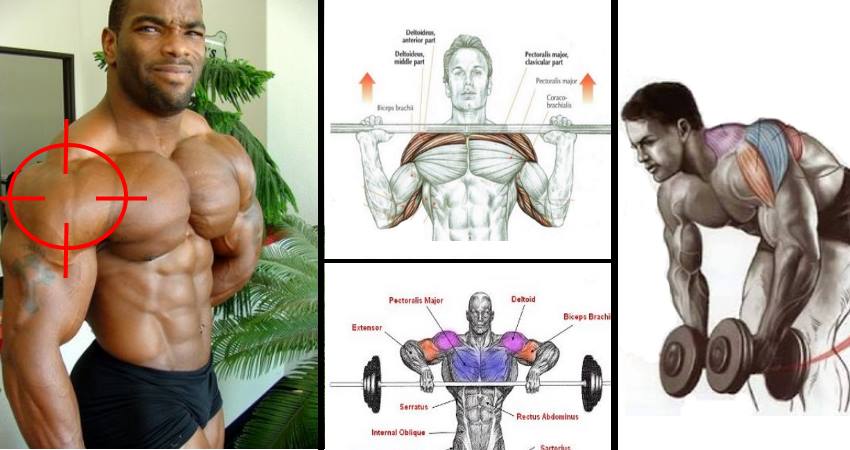When putting together a workout routine, it’s very important to know how your shoulders are built and how they work.
The shoulders are composed of three muscle heads: the front (anterior) head, the middle (lateral) head, and the rear (posterior) head. Every head of the shoulder has its own function.
Anterior (front) head of the shoulder
This part of the deltoid gives the shoulders that “massive” and “thick” look. The anterior head is used in pushing movements and gets heavily worked when you do incline and flat bench presses. The lateral (or side) head also gets involved in pushing movements to a lesser extent.
Isolation movements for the front shoulder include front raises, which can be done with dumbbells, a barbell or a weight plate.
Lateral (middle) head of the shoulder
The middle or side deltoid is responsible for moving the arms sideways. This is the part of the deltoid that gives your shoulders the width.
The lateral head gets worked with shoulder presses (along with the front head). This is the part of the shoulders you need to concentrate on when training to build wide shoulders.
Isolation movements for the side head include side dumbbell raises and wide grip upright rows.
Posterior (rear) head of the shoulder
The rear part of the deltoids is used in pulling movements (larger part of the pulling is done by the back muscles though) and gets heavily worked when you do all kinds of rows and deadlifts.
Isolation movements for the rear head include bent over raises and face pulls. Posterior delts give your shoulders that “3D” look when someone looks at you from the side.
The most common mistake natural bodybuilders do when training shoulders
Bodybuilders often complain that their shoulders don’t grow or lag behind their other body parts. That’s because shoulders are a small muscle group and gets over-worked very often. They literally get worked every time you train your upper body, either with pushing or with pulling movements.
So if you don’t want to intentionally overtrain your shoulders, you could train front delts along with your chest, rear delts with your back and add an exercise for the middle head of the shoulders with your arms, for example.
An example workout split would look like this:
Day 1 – Back, Rear Deltoids
1. Deadlifts
2. Pull Ups
3. Barbell Row
4. Chin Ups
5. Face Pulls
Day 2 – Chest, Front Deltoids
1. Dumbbell Incline bench press
2. Flat Barbell Bench Press
3. Dumbbell Flys
4. Parallel Bar Dips
5. Front dumbbell Raises
Day 3 – Legs
1. Romanian Deadlifts
2. Squats
3. Walking Lunges
4. Standing Calf Raises
Day 4 – Biceps, Triceps and Side Deltoids
1. Close grip bench press
2. Barbell Curls
3. Side Dumbbell Raises
Alternately, you could add triceps to your chest workout, biceps to your back workout and train the side deltoids after your leg workout.
A separate shoulder day is probably too much stress for the deltoids. Remember, keep it simple and your shoulders will grow.
